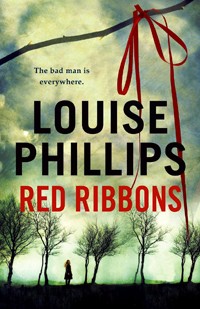 Written by Louise Phillips — The cover of Red Ribbons describes Louise Phillips as ‘a chilling voice in psychological crime fiction’. This is her debut novel, and it is a creditable first attempt. But, truth be told, I found it difficult to engage with this book – and it must have been around 100 pages in before it clicked with me and I became engrossed in the story.
Written by Louise Phillips — The cover of Red Ribbons describes Louise Phillips as ‘a chilling voice in psychological crime fiction’. This is her debut novel, and it is a creditable first attempt. But, truth be told, I found it difficult to engage with this book – and it must have been around 100 pages in before it clicked with me and I became engrossed in the story.
The narrative comes from three points of view. To emphasise the point, one of the viewpoints is even in a different typeface – a gimmick which somewhat questions the reader’s intelligence. Surely people can tell when a different person is talking without having it emblazoned in a bold, sans serif face?
A young schoolgirl is missing – and after her body is found buried in the Dublin mountains, local police call in criminal psychologist Kate Pearson to offer her expert opinion. The body appears staged in a foetal position with hands clasped together, and the girl’s hair has been plaited and tied with long red ribbons. O’Connor, the detective leading the investigation, is satisfied when Kate tells him it will be a while before the killer targets his next victim. However, she is tragically wrong. The body of a second young girl is unearthed from a shallow grave, her body identically arranged, and the chase is on to catch the murderer before he strikes again.
We are led along the story path by Kate; the killer; and a third, seemingly unrelated voice – that of Ellie, a woman who has been institutionalised for the past 15 years, ever since she was pulled out of a burning holiday caravan containing the body of her dead daughter. Ellie is obviously connected to it all, but Phillips racks up the tension by taking her time over letting the cat out of the bag.
I had a few quibbles with this book, the foremost being that I felt I’d somehow read it all before. The setting was different (Ireland) but the story was annoyingly familiar… a loner with a problem mother killing young girls for no apparent reason, then dressing them up before burying them. I couldn’t shake off a nagging sense of deja vu.
The Irish setting certainly gave the book added interest, but some of the phrasing and vocabulary, though authentic, may sound odd to readers unaccustomed to it. I was caught out a few times by the use of the word ‘guard’ as in ‘the guard at the door’. I kept thinking of a Securicor man or a bouncer, when it meant a police officer.
I enjoyed Phillips’ style. She has an attractive, free flowing way of writing and a deft touch with characterisation. The double act of Kate and O’Connor (like Morse, we never learn his first name) is ripe for a series, but this book is ultimately let down by a lack of originality. I’ll be happy to give her a second chance though, and will look out for The Doll’s House, which is due to be published next year.
Hachette Ireland
Print/Kindle/iPad
£7.99
CFL Rating: 3 Stars







